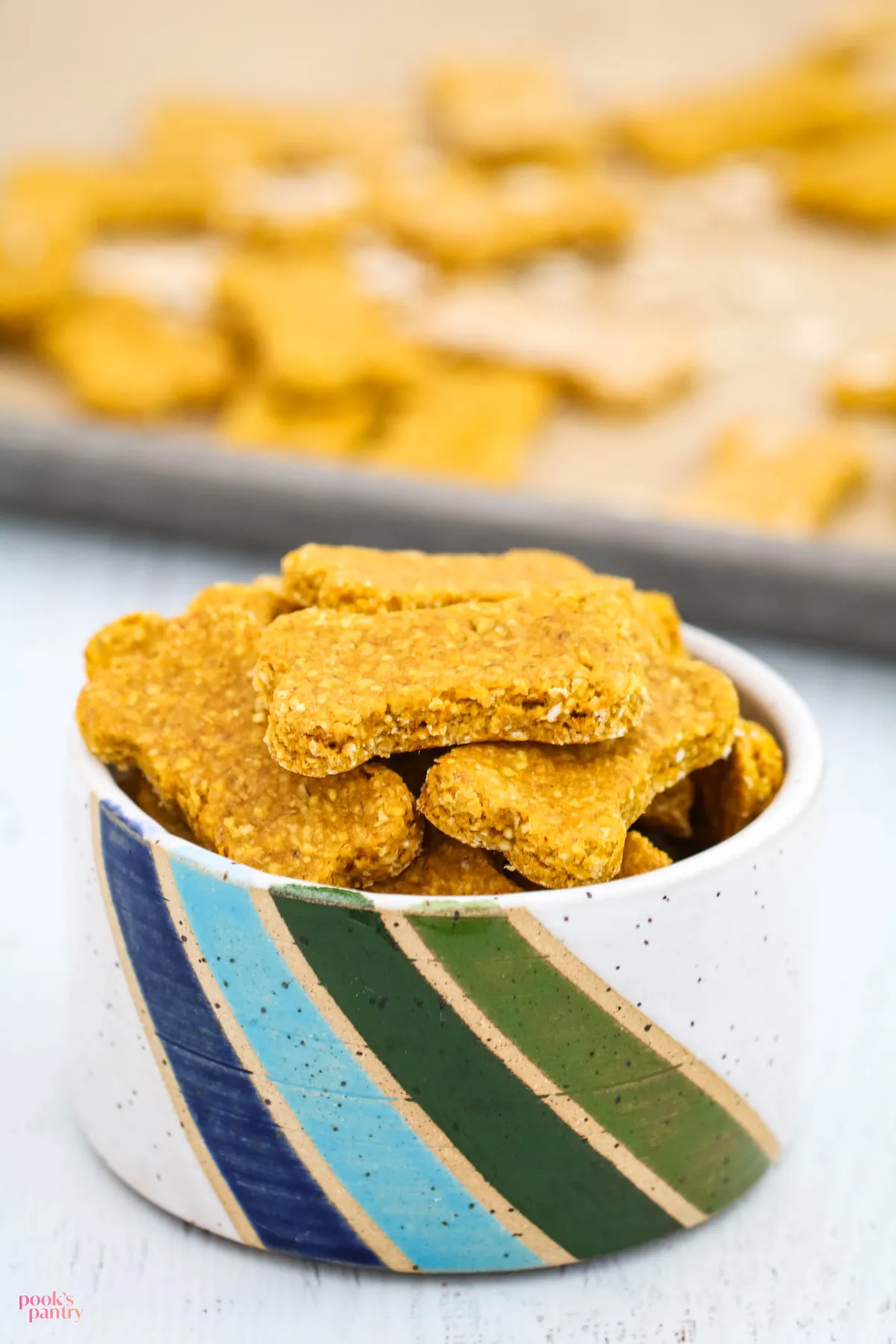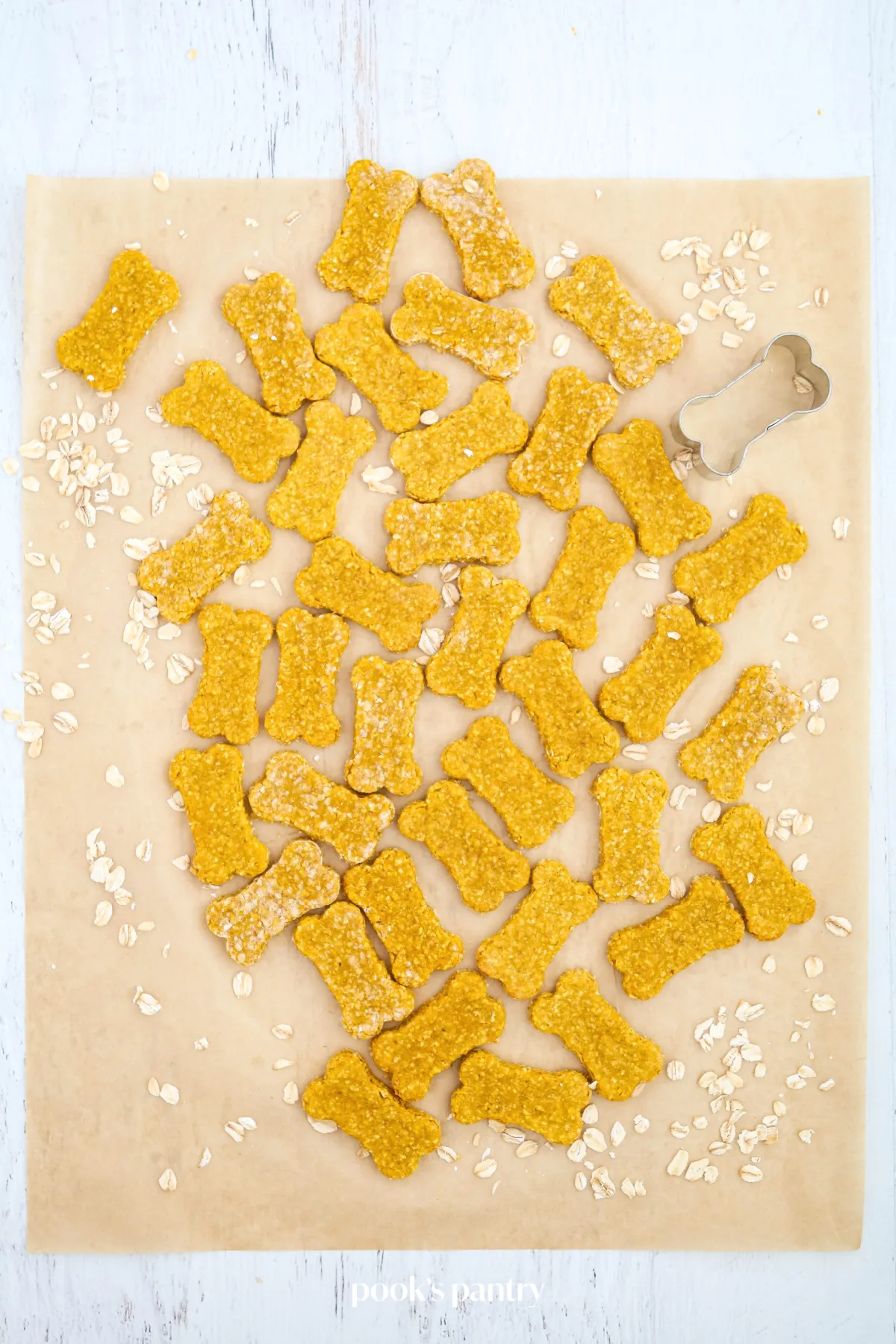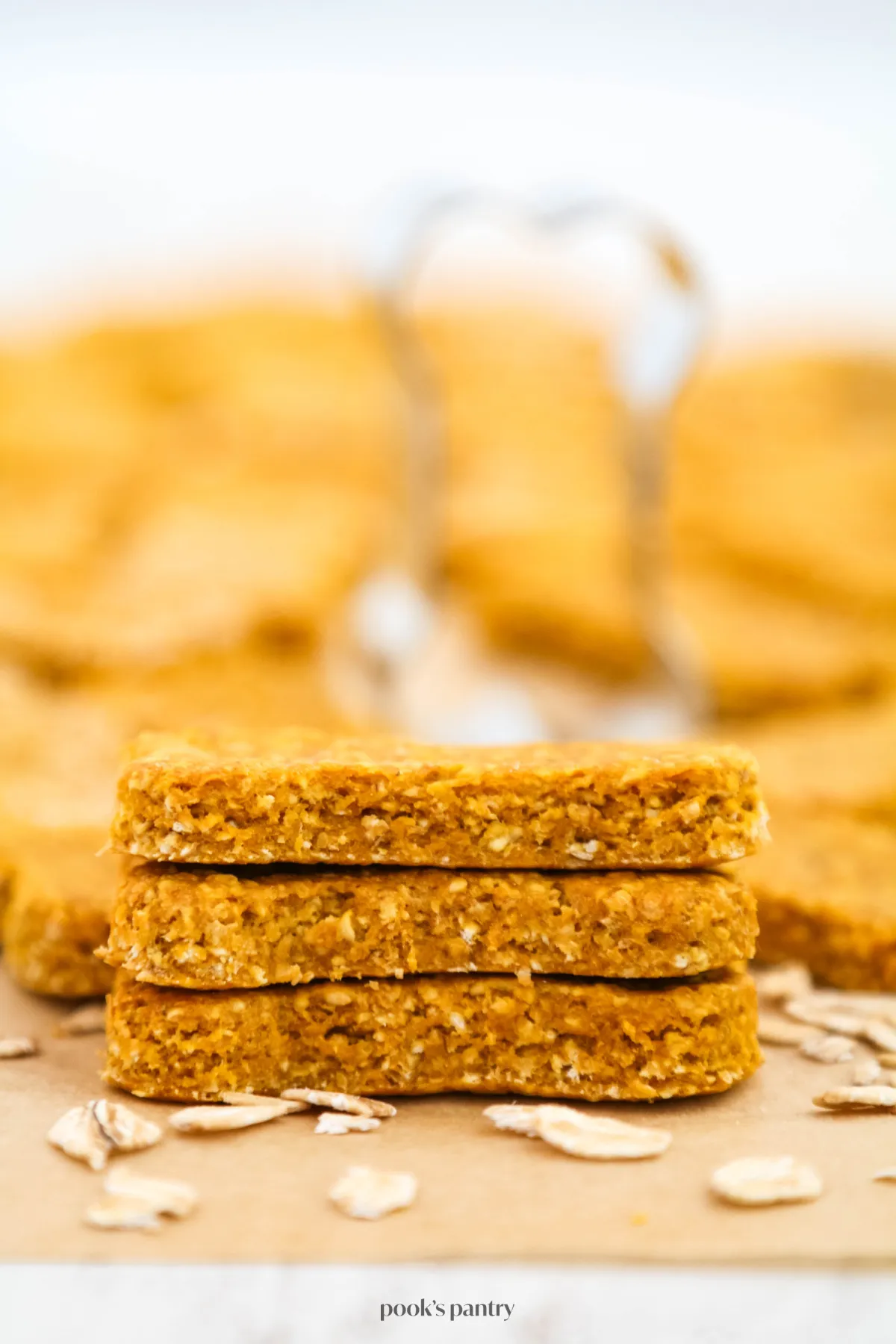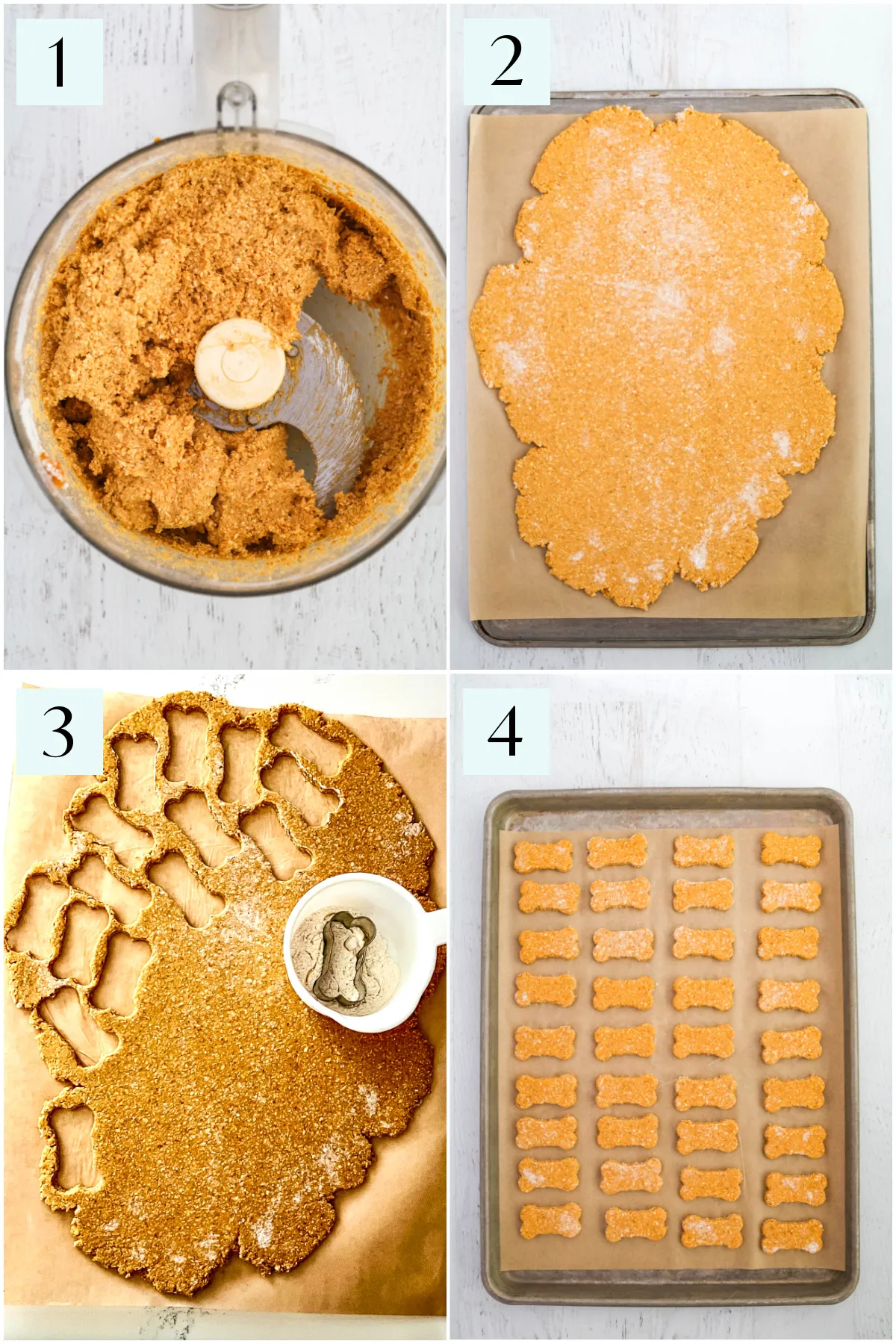Every dog owner delights in spoiling their furry companion with tasty treats. However, with growing awareness about canine health and dietary needs, many are seeking healthier, more transparent alternatives to store-bought options. A common concern revolves around allergies and sensitivities, especially to ingredients like peanut butter, which, despite its popularity, can be problematic for some pups. If you’re looking for wholesome, easy-to-make snacks that cater to these needs, you’ve come to the right place. Our focus today is on crafting delectable dog treat recipes without peanut butter – specifically, a simple yet incredibly satisfying oatmeal pumpkin dog treat recipe that uses just three main ingredients. These treats are not only healthy and inexpensive but are also perfect for dogs with sensitive tummies, offering a safe and delicious way to show your love.
Why Choose Homemade Dog Treats (Especially Peanut Butter-Free)?
Opting for homemade dog treats offers numerous benefits, providing peace of mind and ensuring your canine friend receives the best. When you take the time to prepare treats yourself, you gain complete control over the ingredients, guaranteeing a wholesome and safe snack for your beloved pet.
Unparalleled Ingredient Control
Store-bought dog treats, while convenient, can often contain a myriad of hidden ingredients, artificial preservatives, and fillers that may not be ideal for your dog’s health. By making treats at home, you become the chef and the nutritionist, knowing exactly what goes into every bite. This allows you to avoid potential allergens, unnecessary additives, and ingredients that are simply not beneficial for canine consumption. Understanding what food not to feed your dog is crucial, and homemade treats eliminate any guesswork. You can confidently select human-grade ingredients that contribute to your dog’s overall well-being.
Allergy & Sensitivity Friendly Options
One of the most significant advantages of homemade dog treats is the ability to cater to specific dietary restrictions and sensitivities. Peanut butter, while a common treat for many dogs, can be a severe allergen for others, leading to digestive upset, skin issues, or more serious reactions. Our focus on “Homemade Dog Treats No Peanut Butter” directly addresses this concern. Ingredients like pumpkin and oats are generally gentle on the digestive system, making these treats an excellent choice for dogs prone to stomach sensitivities or allergies. This recipe provides a fantastic alternative that still offers a satisfying texture and taste without the worry.
Cost-Effective Pampering
Spoiling your pup doesn’t have to break the bank. Store-bought specialty treats, especially those marketed as “natural” or “hypoallergenic,” can come with a hefty price tag. Homemade treats, conversely, are surprisingly economical. The core ingredients for many recipes, like oats, pumpkin, and eggs, are staples you might already have in your pantry or can purchase affordably. This allows you to produce a large batch of treats for a fraction of the cost, making it feasible to keep your treat jar full without straining your budget.
A Rewarding Bonding Experience
Beyond the practical benefits, making homemade dog treats can be a delightful bonding activity. The effort you put into preparing these snacks is a clear expression of love for your pet. Plus, the enticing aromas wafting from your kitchen as the treats bake will undoubtedly capture your dog’s attention, building anticipation and excitement. For those furry friends who might be a bit finicky or refuses to eat certain foods, a homemade treat made with love can often be the encouragement they need.
Tailored to Perfection
Homemade treats offer unmatched customization. You can adjust the texture – baking for a shorter time results in softer treats, ideal for older dogs or those with dental issues, while longer baking yields a satisfying crunch. You can also experiment with different shapes and sizes to suit your dog’s preference or training needs. This level of personalization is simply not possible with pre-packaged options.
The Power of Three: Simple, Wholesome Ingredients
This incredibly easy recipe for homemade dog treats without peanut butter relies on just three foundational ingredients. Each component is chosen for its nutritional benefits, digestibility, and ability to create a delicious and wholesome snack for your dog.
 Delicious oatmeal pumpkin dog treats in a decorative pottery bowl
Delicious oatmeal pumpkin dog treats in a decorative pottery bowl
Old-Fashioned Oats: The Wholesome Base
Old-fashioned oats, also known as rolled oats, form the bulk of these treats, serving as a fantastic, gluten-free alternative to traditional wheat flour.
- Nutritional Benefits: Oats are a good source of soluble fiber, which can aid in digestion and help regulate blood sugar levels. They are also rich in vitamins, minerals, and antioxidants, contributing to your dog’s overall health and vitality.
- Digestibility: Unlike some grains, oats are generally easy for dogs to digest, making them an excellent choice for sensitive stomachs.
- Preparation: For this recipe, the oats are ground in a food processor to an almost flour-like consistency. This helps bind the ingredients together and creates a smoother texture for the treats.
- Important Note: While old-fashioned and quick-cooking oats can be interchangeable (though quick-cooking oats might require slightly less processing), steel-cut oats should not be used. Steel-cut oats have a different structure and require much longer cooking times, making them unsuitable for this type of quick-bake treat. Also, always avoid flavored oatmeal packets, as they often contain added sugars and artificial ingredients that are harmful to dogs.
Pure Pumpkin Purée: The Digestive Superstar
Pumpkin is a celebrated superfood for dogs, and its inclusion in these treats adds both moisture and a powerhouse of nutrients.
- Digestive Health: Pumpkin is renowned for its high fiber content, which can help regulate bowel movements, alleviating both constipation and diarrhea. It acts as a natural stomach soother, making it perfect for sensitive dogs.
- Vitamins and Minerals: Pure pumpkin is packed with essential vitamins like Vitamin A (for vision and immune health), Vitamin C (an antioxidant), and Vitamin E (for skin and coat). It also contains minerals such as potassium, crucial for muscle function and hydration.
- Crucial Distinction: It is absolutely vital to use 100% pure pumpkin purée, not pumpkin pie filling. Pumpkin pie filling contains added sugars, spices (like nutmeg, which is toxic to dogs), and other ingredients that are detrimental to canine health. Always check the label to ensure you’re getting pure pumpkin with no additives.
Eggs: The Binding and Boosting Agent
Eggs play a dual role in this recipe, acting as a natural binder that holds the treats together and providing valuable nutrients.
- Binding Properties: The proteins in eggs coagulate when heated, creating the structure that gives these treats their form.
- Protein Source: Eggs are an excellent source of complete protein, containing all the essential amino acids dogs need for muscle development, tissue repair, and overall health. They also provide healthy fats and vitamins like D and B12.
- Egg-Free Alternative: For dogs with egg allergies, a simple substitute can be made using chia or hemp seeds. Mix 2 tablespoons of chia or hemp seeds with 6 tablespoons of water and let it sit for about 5 minutes until a gel forms. This “chia/hemp egg” can then be used in place of two large eggs.
These three ingredients demonstrate that delicious and healthy what are things dogs can eat don’t require a long list of complex items. Simple, natural, and wholesome is often best.
Baking Made Easy: A Step-by-Step Guide
Creating these homemade dog treats is a straightforward process, designed for simplicity and speed. In just about 25 minutes, you can have a fresh batch of peanut butter-free goodies ready for your pup.
Essential Preparation
Before you begin, preheat your oven to 350°F (180°C). This ensures the oven is at the correct temperature for even baking. Gather your equipment: a food processor, a mixing bowl, parchment paper, a rolling pin (if you plan to cut shapes), and a baking sheet. Lining your baking sheet with parchment paper is highly recommended to prevent sticking and make cleanup a breeze.
Crafting the Dough
The first step is to prepare your oats.
- Grinding the Oats: Add 3 cups of old-fashioned oats to the bowl of your food processor. Pulse and run the machine for 1 to 2 minutes until the oats are mostly a flour-like consistency, but it’s perfectly fine if a few larger pieces remain. This texture will give the treats a nice, rustic feel.
- Combining Ingredients: Once the oats are ground, add 1 cup of pure pumpkin purée and 2 large eggs to the food processor. Process until all ingredients are well combined and form a uniform dough. The dough will be firm but might feel a little sticky. This is normal.
Shaping Your Delightful Treats
You have a couple of options for shaping, depending on your preference and how much effort you want to put in. Remember, your dog won’t mind if they’re not perfectly shaped bones!
 Freshly baked oatmeal pumpkin dog treats on parchment paper with a bone-shaped cookie cutter
Freshly baked oatmeal pumpkin dog treats on parchment paper with a bone-shaped cookie cutter
Rolling and Cutting (for shaped treats):
- Turn the dough out onto a lightly floured countertop. Work a small amount of flour from the counter into the dough until it’s less sticky and more manageable. Alternatively, you can place the dough between two sheets of parchment paper and roll it out there, which prevents sticking without adding much extra flour.
- Using a rolling pin, roll the dough to about 1/8 inch thick.
- Use a cookie cutter (dog bone shapes are popular, but any shape works!) to cut out your treats. Dip the cookie cutter in flour occasionally to prevent sticking.
- Carefully transfer the cut treats to your parchment-lined baking sheet.
- Gather the dough scraps, gently re-roll, and cut out more treats until all the dough is used.
 Step-by-step images showing the process of making pumpkin dog treats with oatmeal
Step-by-step images showing the process of making pumpkin dog treats with oatmeal
Scooping and Flattening (for drop-style treats):
- If you prefer a simpler approach, use a small scoop (like a melon baller or a small cookie scoop) to portion out the dough.
- Place the scooped dough balls onto the parchment-lined baking sheet.
- Use a fork to gently flatten each ball, similar to making peanut butter cookies. This is quicker and just as delicious for your pup!
 Scooped, unbaked pumpkin dog treats neatly arranged on a baking sheet
Scooped, unbaked pumpkin dog treats neatly arranged on a baking sheet
Baking and Cooling to Perfection
- Bake: Place the baking sheet in the preheated oven and bake for 16 to 18 minutes. For even baking, rotate the baking sheet halfway through the cooking time.
- Cool Completely: Once baked, remove the treats from the oven and let them cool completely on the baking sheet before transferring them. Cooling is crucial as it allows the treats to firm up and reach their final texture.
Tip for Softer Treats: If you have an older dog or a dog with dental issues who prefers softer treats, you can reduce the baking time to 14-16 minutes. Just ensure they are baked all the way through before removing them from the oven. For a crunchier treat, you can bake for the full 18 minutes or even a minute or two longer, keeping a close eye on them to prevent burning. This recipe, using a 2-inch cutter, typically yields about 90 dog bone treats, providing a generous supply for your happy pup!
Storage Solutions for Freshness
Because these homemade dog treats no peanut butter contain no artificial preservatives, proper storage is key to maintaining their freshness and preventing spoilage. You have excellent options for both short-term and long-term storage, ensuring your dog can enjoy these delicious snacks whenever they please.
Short-Term Storage: Refrigeration
For treats you plan to use within a couple of weeks, refrigeration is the best method.
- Container: Place the cooled treats in an airtight container. This prevents them from drying out and protects them from absorbing odors from other foods in your fridge.
- Duration: When stored properly in the refrigerator, these oatmeal pumpkin dog treats will stay fresh for up to two weeks.
- Why Refrigerate? The natural ingredients, especially the pumpkin and eggs, are perishable. Just like any homemade baked good, without preservatives, they are susceptible to mold growth if left at room temperature for too long, particularly in warmer or humid climates.
Long-Term Storage: Freezing for Extended Freshness
For larger batches or if you want to extend the shelf life significantly, freezing is an excellent choice.
- Preparation: Once the treats are completely cool, arrange them in a single layer on a baking sheet and flash freeze for about an hour. This prevents them from sticking together when you transfer them to a container.
- Container: Transfer the flash-frozen treats to an airtight freezer-safe container or a heavy-duty freezer bag.
- Duration: In the freezer, these treats will remain fresh for up to three months.
- Convenience: Freezing allows you to take out just a few treats at a time as needed, letting them thaw at room temperature for a short while before serving. This is a fantastic way to always have a supply of fresh, homemade treats on hand without the pressure of consuming them quickly.
Climate Considerations
If you live in a cooler, less humid climate, you might be able to store these treats in a cute dog treat jar on your counter for a few days. However, as a general rule, especially in warmer or more humid environments, it’s always safest to store homemade treats in the refrigerator. When in doubt, freeze them! This proactive approach ensures food safety and guarantees your dog always gets the freshest possible snack.
 Baked pumpkin dog treats with visible oat texture, stacked in a close-up shot
Baked pumpkin dog treats with visible oat texture, stacked in a close-up shot
Frequently Asked Questions about Storage:
How do I store homemade dog treats?
Store these oatmeal pumpkin dog treats in an airtight container in the refrigerator for up to 2 weeks. For longer storage, freeze them in an airtight container for up to 3 months.How long do these treats stay fresh?
If properly stored in an airtight container in the refrigerator, they will last up to 2 weeks. In the freezer, they will stay fresh for up to 3 months.
Delicious Variations and Substitutions
While the classic oatmeal pumpkin combination is a winner for homemade dog treats no peanut butter, you can easily adapt this recipe to suit your dog’s preferences or address specific dietary needs. Experimenting with variations keeps treat time exciting and ensures your pup never gets bored!
Pumpkin Alternatives for Flavor & Variety
If pumpkin isn’t readily available or if you want to offer a different flavor profile, several other dog-safe pureed vegetables can be excellent substitutes:
- Sweet Potato Purée: Cooked and mashed sweet potato is a fantastic alternative. It offers similar moisture content and is packed with vitamins, fiber, and antioxidants.
- Butternut Squash Purée: Like pumpkin, butternut squash is a healthy, fiber-rich option that provides a mild, sweet flavor dogs often enjoy.
- Adjusting Moisture: When substituting pumpkin with sweet potato or butternut squash, the texture of the purée might be slightly drier. You may need to add an additional tablespoon or two of water to the dough to achieve the right consistency, ensuring it’s pliable enough to roll or scoop.
Egg Alternatives for Allergen-Free Options
For dogs with egg allergies or sensitivities, or if you simply prefer an egg-free recipe, you can easily make a “flax egg” or “chia egg” substitute:
- Chia or Hemp Seed “Egg”: Mix 2 tablespoons of chia seeds or ground hemp seeds with 6 tablespoons of water. Let this mixture sit for 5-10 minutes until it forms a thick, gel-like consistency. This gel can then be used in place of the two large eggs in the recipe, acting as an effective binder.
Oat Alternatives for Texture Preference
While old-fashioned oats are ideal for their texture and ease of grinding, you can use quick-cooking oats if that’s what you have on hand. Remember, never use flavored oatmeal packets due to their high sugar content and artificial additives.
Beyond the Basics: Safe Add-ins
Once you’re comfortable with the base recipe, you can consider incorporating other dog-safe ingredients for added nutrition and flavor. Always introduce new ingredients slowly and in small amounts to monitor your dog’s reaction.
- Ground Cinnamon: A tiny pinch of cinnamon (less than 1/4 teaspoon for the whole batch) can add a pleasant aroma and has anti-inflammatory properties.
- Fresh Blueberries: A small handful of fresh blueberries (about 1/4 cup) can be gently folded into the dough before baking. Blueberries are packed with antioxidants.
- Parsley: Finely chopped fresh parsley (1-2 tablespoons) can be added for a breath-ffreshening boost.
While our main keyword is “homemade dog treats no peanut butter,” it’s also worth noting that if your dog doesn’t have a peanut allergy, there are also many delightful homemade peanut butter dog treats recipes available. However, for the health and safety of dogs with sensitivities, this current recipe provides a robust and equally delicious alternative.
Conclusion
Creating homemade dog treats no peanut butter is a rewarding endeavor that benefits both you and your beloved canine companion. This simple, three-ingredient oatmeal pumpkin recipe offers a fantastic solution for dog owners seeking healthy, cost-effective, and allergen-friendly snack options. By taking control of the ingredients, you ensure your dog receives only the best, free from unwanted additives and common allergens like peanut butter.
From the wholesome goodness of oats and pumpkin to the binding power of eggs, each ingredient works in harmony to produce treats that are not only delicious but also gentle on sensitive stomachs. Whether you roll and cut them into playful shapes or opt for the quick scoop-and-flatten method, the process is straightforward and enjoyable. Proper storage through refrigeration or freezing means you’ll always have a supply of fresh, homemade love ready to reward your loyal friend.
Empower yourself as a pet parent by making informed choices about what goes into your dog’s bowl and treat jar. Experiment with the suggested variations, and personalize these treats to suit your pup’s unique preferences. Your dog deserves the very best, and with these easy-to-make, peanut butter-free delights, you can provide just that – a token of your affection that’s as healthy as it is tasty. So, preheat your oven and get ready to whip up a batch of these wonderful treats. Your happy, healthy pup will thank you with wagging tails and enthusiastic licks! Explore more healthy and helpful recipes on Dog Care Story to continue your journey of providing the best care for your furry family member!

 Step-by-step images showing the process of making pumpkin dog treats with oatmeal
Step-by-step images showing the process of making pumpkin dog treats with oatmeal Scooped, unbaked pumpkin dog treats neatly arranged on a baking sheet
Scooped, unbaked pumpkin dog treats neatly arranged on a baking sheet